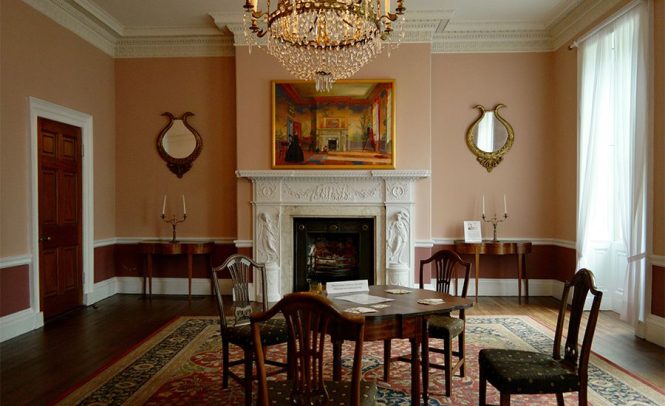

Eliminating decor fading is crucial for preserving the beauty and value of your cherished decorative items. Imagine the stunning artwork, vibrant textiles, and elegant furniture you own, all fading away over time! Decor fading is a common problem that occurs when materials are exposed to certain environmental factors, and it results in a loss of color, clarity and vibrancy. This article delves into the multifaceted reasons behind fading, providing actionable solutions to eliminate it and preserve the visual appeal of your precious decorations. We will examine preventative measures, and restoration techniques to help you maintain your beloved items for years to come. The structure will cover the causes of fading, preventative steps, and restoration methods to address existing fading. Finally, we provide FAQs and additional resources.
Understanding the Causes of Decor Fading
Exposure to Sunlight and UV Rays
Sunlight, especially direct sunlight, contains harmful ultraviolet (UV) rays that break down the chemical bonds in materials like dyes and pigments. This leads to a loss of color intensity over time. Overexposure to UV rays is a primary driver of fading, especially for outdoor decorations or those placed near windows.
Temperature Fluctuations
Extreme temperature changes can also contribute to fading. Rapid shifts between high and low temperatures can alter the molecular structure of materials. High temperatures often accelerate the degradation processes.
Environmental Factors
Certain environmental factors like high humidity, moisture, or proximity to moisture sources can also impact decorative items. Moisture can cause chemical reactions, leading to color degradation. In humid climates, this is particularly prevalent.
Poor Maintenance and Cleaning Practices
Harsh cleaning products or improper cleaning methods can also contribute to fading. Using abrasive materials or excessively strong chemicals can damage the surface of the decor and result in a loss of color vibrancy. Many products claim to be gentle, but reading the product label is critical.
Preventative Measures for Decor Fading
Strategic Placement and Protection
Place your decorations in areas with minimal direct sunlight exposure. Consider using blinds, curtains, or UV-protective coverings to shield them from harmful UV rays. Careful placement is crucial to maintain colors and avoid fading.
Regular Cleaning with Gentle Products
Use gentle cleaning products formulated for your specific decorative item. Always test a small, hidden area before cleaning the entire item. Gentle cleaning helps preserve the item’s integrity and its color, avoiding harsh damage.
UV-Resistant Materials and Treatments
Consider using UV-resistant materials whenever possible, especially for outdoor or frequently exposed decorations. Some decorative items can be treated to increase their resistance to fading. These treatments can effectively protect your items over time.
Controlling Environmental Factors
Maintaining a relatively stable environment, especially in terms of temperature and humidity, can significantly reduce fading. Proper storage is crucial for items that are not displayed often. This can lessen damage, color change and eventual fade.
Restoration Techniques for Existing Decor Fading
Professional Cleaning and Restoration Services
For significant fading, professional cleaning and restoration services are recommended. Experts can utilize specialized techniques and products to restore the color and vibrancy to your decorations. Consult local restoration services for professional help.
Use of Color-Restoring Products
Specialty products designed to restore faded colors can often be effective in specific cases. However, they should only be applied after testing on a hidden area to ensure compatibility. Read labels carefully before use.
Selective Re-Dyeing
In certain cases, re-dyeing or color enhancement techniques can help restore the original color of the decor. It’s imperative to ensure the product is suitable for your item’s material to avoid damage.
Alternative Treatments for Particular Items
Different materials require different restoration methods. For instance, fading in fabrics can be tackled with specialized fabric dyes or treatments. Be sure to research the best options for your item.
Additional Considerations
Regular Inspection
Regularly inspect your decorations for signs of fading or damage. This will allow you to address issues early and prevent further deterioration. Regular inspection is a key part of preventative maintenance.
Environmental Control
Control environmental factors like direct sunlight, humidity, and temperature as much as possible. Maintaining a stable environment significantly affects fading.
Proper Storage
Proper storage is key to preserving decorations. Store them appropriately to reduce damage or fading, especially when not in use. Storage can significantly extend the longevity of the decorations and reduce the impact of time.
Maintenance Plan
Develop a maintenance plan to address regular care and cleaning of your decorations. This plan helps to address problems early and preserve the item’s integrity.
Conclusion (Repeat):
[{ “question”: “What are the most common causes of decor fading?”, “answer”: “The primary causes of decor fading include exposure to sunlight and UV rays, fluctuating temperatures, environmental factors such as humidity, and improper cleaning practices. Sunlight’s UV rays are a leading cause, breaking down dyes and pigments. Temperature changes can also impact the material’s structure. High humidity or moisture can lead to chemical reactions affecting the color. Harsh cleaning products can cause surface damage and loss of color.”}, {“question”: “How can I prevent my decorations from fading?”, “answer”: “To prevent fading, place decorations in areas with minimal direct sunlight. Use protective coverings like blinds or curtains to shield them from UV rays. Opt for UV-resistant materials and treatments. Control environmental factors like humidity and temperature. Implement a regular cleaning schedule with gentle cleaning products, checking labels and testing products in an inconspicuous area. Proper storage helps prevent unnecessary wear and tear.”}]
In conclusion, eliminating decor fading is achievable with proper care and maintenance. By understanding the causes of fading and implementing the preventative measures outlined above, you can preserve your cherished decorative items for years to come. Invest in protective measures and enjoy the beauty of your decorations for a lifetime. Consider regular professional cleaning or restoration to prolong their lifespan and maintain their aesthetic appeal.